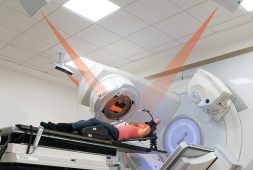
Cancer is never easy. When patients hear that they’ve been diagnosed with this disease, it usually means that they may have to enjoy the last few moments of their life or they have to go through a long battle to see victory. The news becomes even more difficult to take when it hits children.
Unfortunately, cancer chooses no age, race, or kind. Thousands of kids practically live in hospitals as they battle this deadly disease. Some of them make it, and some don’t. But what doctors have been working on now may help those who have been diagnosed with osteosarcoma.
Treatments for deadly bone cancers that oftentimes target or affect children may be available in the future. Thanks to the experiments that had been able to identify a protein that promoted cell death in osteosarcomas, which is a type of bone cancer.
Researchers at Shanghai Jiao Tong University looked into this matter and said the latest discovery could bring in a cure for all types of skeletal tumors, which gives great hope to patients all over the world.
Fact is, osteosarcoma is the most common type of bone cancer. Unfortunately, this happens mainly in children. That’s because the cancer has been connected to the rapid bone growth they have and these tend to develop in boys more often. That’s because there’s an average height difference between the two.
Osteosarcoma, unfortunately, also just has a 55 percent survival rate. If this doesn’t see any improvement within the century, it could be an even bigger problem. This is why scientists have set their minds on developing several potential medicines that could help the patients because the other option, surgical removal of the osteosarcoma tumors, is oftentimes considered impossible by doctors.
At Shanghai’s Jiao Tong University School of Medicine, the team of researchers were able to identify a bone matrix protein that is called secreted phosphoprotein 24 kD (Spp24). This is what binds to and neutralizes a protein called bone morphogenetic protein 2, which has properties that encourage and promote the tumors to further grow and proliferate.
“Cell proliferation, migration, and invasiveness were all inhibited by Spp24. Treatment with Spp24 reduced tumor growth,” said Dr. Haijun Tian at Jiao Tong. “These results confirm the potential of Spp24 as a therapeutic agent for the treatment of osteosarcoma and other skeletal tumors,” he added.
“Like many other bone matrix proteins, the more we look into the function of Spp24, the more surprising roles we find even though the primary function of Spp24 remains uncertain,” he also said.
Medicine and biology don’t always take the traditional route. Sometimes, new discoveries bring these experts to a whole new world of options. At times, drugs and proteins have therapeutic functions, even if the reason behind it all don’t give all the explanations. If it works, then it just does.
The findings of the research had been published in the journal Orthopedic Research.



